Australians are lazy, or for how long you may expect activation of the islands?
When my second trip to Kangaroo OC-139 was announced on internet in February 2014, I’ve received few messages from various countries (including Russia) with a common refrain - "Hmmm… almost everyone has got the Island confirmed for so long now, and few who hasn’t - worked with you in the first trip. It would be better if you went to the island ... " accompanied by "The List". Surprisingly, financial assistance hasn’t been offered ... (more precisely - the partial financial support was proposed and approved on behalf of IOTA by G3KMA for a trip to the Flinders Island OC-261. But, alas – the trip had been cancelled because there were already some of the difficulties of a medical nature).
After the trip, which took place quite well, I had more personal problems and dropped out of radio (and any work and contacts) for a year and half. Only now I’m starting to read accumulated mail and open envelopes.
Please excuse me sincerely all those who have not received a response even directs. They will be sent out in the next month. Unfortunately, in some cases everything except health takes a back seat.
But enough of the bad news
While I had unlimited opportunity to think, at one point, the issue with Australia IOTA activations came up.
It should be pretty easy to work from Australia - a free country, Australian radio amateurs don’t need a visa, get a temporary license for a tourist is not so difficult, many hams need Australian islands - but some of the island weren’t activated for a long time.
And recently, quite suddenly, while talking on Skype with Alexander Teimurazov 4L5A / D4B I’ve got an offer - why not make this and other observations "from within Australia" published ? Of course, in the era of Internet Australia is not a "terra incognita" anymore. Nevertheless, it still remains a “fuzzy images” for many people.
With much gratitude the offer has been accepted (especially because Alexander gave me a "ticket" to the world of IOTA, generously helping in my first trip to the island - Norfolk, VK9NI).
After first lazy and later energetic internet crawling an interesting picture became clear, causing the "sweaty shaft inspiration" which I represent to everyone.
Please accept my apologies for any inaccuracies, because at the time of publication of this opus some islands will be activated again for sure. In addition, a pair of islands from the following list has been activated, but the for ”home use" - less than a hundred QSOs, at daytime, 40 meters SSB, shortened GP, solar panels / low power - for all who are far away from Australia totally useless. No more than a wish to get a feeling of grandeur activator ...
So, let's begin. Each IOTA often consists of many islands, but the most part of them are rocks or tiny islands, not available for the operation, so the most reachable island in the group is taken for the review.
| IOTA | Island/Group name | Last activated by | Year |
|
|
|
|
|
| Victoria, VK3 | |||
| OC-251 | Lady Julia Percy | VI3JPI | 2003 |
| South Australia, VK5 | |||
| OC-228 | Granite Island/Baudin Rocks | VI5BR | 2005 |
| Western Australia, VK6 | |||
| OC-193 | Cheyne | VK6CHI | 2007 |
| OC-243 | Breaksea | VK6BSI | 2001 |
| OC-206 | Dirk Hartog | VK6DHI | 2005 |
| OC-214 | Lacepede | VK6ISL | 1996 |
| OC-266 | Viney | VK6AN | 2004 |
| OC-154 | Troughton | VK8AN/6 | 2008 |
| Northern Territory, VK8 | |||
| OC-229 | Goulburn | VK8AN/8 | 1999 |
| OC-198 | North Island | VK4WWI/8 | 2004 |
| Western Australia Outers | |||
| OC-234 | Browse | VK6BM | 2000 |
| OC-230 | Rowley Shoals | VK9RS | 1999 |
| Australian External Territories | |||
| OC-267 | Coral Sea Islands North (Marion Reef) | VK4WWI/P | 2004 |
| OC-265 | Coral Sea Islands South (Cato Reef) | VK4WWI/P | 2003 |
What has changed since then, and what factors might affect the activity?
Legislation -
In connection with the ongoing work on the protection of nature, many islands have been re-classified as reserves / national parks with limited access. Few of them - completely closed for visitors as "nursery" for seals and other animals / birds.
Few islands are inhabited by aboriginal communities and permission is required to visit the community.
Distance, financial costs -
Some islands have got total ban for landing and now it’s impossible to get there.
Others are hardly accessible – sometime by light airplane or helicopter, of course – by a boat.
Some of them are available for viewing only – cruise/tour with “no landing” requirement.
Also – most of islands are situated not too far from Australian coast, but nearest town/village from where boat rent/transportation can be organized is far away.
Absolutely everything has to be brought with you in vast majority of all cases and taken back. After all, most of the islands are uninhabited; there are no shops, and no water, fuel for the generator, toilet paper and nail files. And if there is no permanent population, the goods supplied for shift workers are not considered visitors. And even the island has population there are other problems – everything is much more expensive and choice is limited. Everything must be delivered from the continent in first instance...
Time spent -
"Everything is slow in Australia." This is one of the first rules to be accepted. Not because no one cares about you and all your plans, but simply because there is no need to hurry. People will help so open-heartily that you will be surprised - just speed of life flow is different from yours.
First of all you need to get to the Capital of respective state, I even don’t mention it. But it must be done because direct flights to small towns (or even Capital) to small towns in other states almost don’t exist. For example, if I want to get from Adelaide (VK5) to Darwin (VK8) flight will take almost 4 hours, to Perth – 3.5 hours.
It's just time of the flight. If you will count airport procedures, then move from the airport to the city, hotel search, etc – it will take full day.
You can, of course, go by a car (and get rid of heavy, oversized baggage problems) – it’s about 3,000 km in one direction.
Next - move / fly into town (most likely tiny), the nearest to the island, or where you have agreed beforehand with the owner of the boat and paid rent (and it may still be 200-500 km.).
Then ... it can be anything you don’t expect. The little town off the beaten track in any country is a boredom place, time is stand still.... Plus the beer (in unusual even for someone who came from Russia amounts) ...
And we can get in a situation like members of one of the Australian rare IOTA expeditions. Everything is spinning; they have arrived to the town, hams around earth are waiting - but the skipper sat down on Friday with friends - and until Monday "all are free". Not because he is lazy - just because he is got very hard morning… So expedition members had to transport the sea wolf in a relaxed state to the boat, because without his presence the vessel couldn’t go anywhere.
So such trip often may result in 2-4 weeks (and only 3-5 days had been spent on air) and timing is unpredictable - not fatal, but some people have to earn money next expedition (it is necessary sometime), and the Boss is not always a radio amateur who understand everything ...
The presence of "IOTA radio amateurs' and their capabilities -
Alas, amateur radio as a hobby "aging" quickly enough and the influx of young people is extremely weak around the world.
If you look at the spreadsheet above, it is clear that the majority of the most severe previous activations carried out by almost same people. They had capabilities for such trips and it explains everything. For example, Dan Holloway VK8AN (alas, deceased) carried out a lot of IOTA expeditions. He was a helicopter pilot, serving the oil and gas production in the ocean, and as such visited many islands, helping members of the West Oz DX Club (VK6) as well. Or, for example, VK5CE successfully fulfill his dream of IOTA in the past year.
If you are not tired yet, then go to specific islands in the spreadsheet above – to learn about the real world, not my contemplative passages only. It is possible that even this limited and dry information may help someone in organization of the next expedition - or, at least, a it will entertain the reader.
| OC-251 | Lady Julia Percy Island |
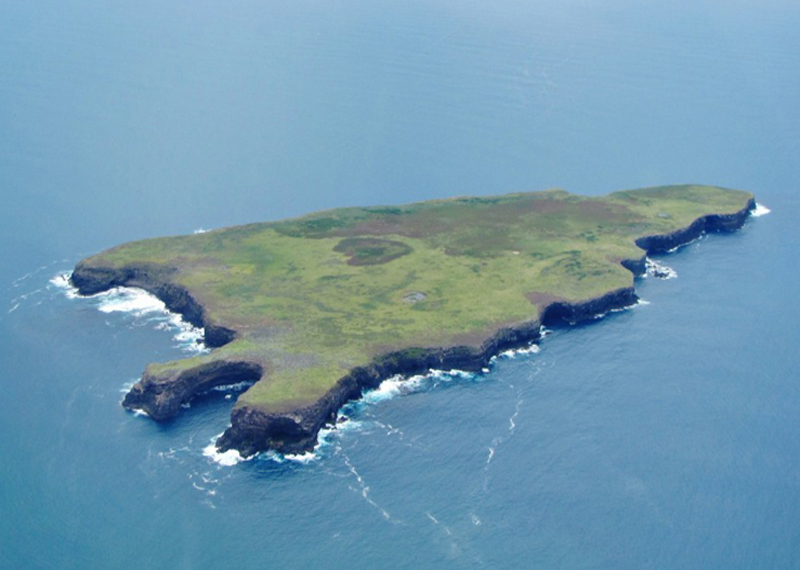
The island is situated about 22 km away from the coast. Size is 2 x 1 km. Uninhabited. The only volcano in Australia (probably in the last few million years closed for maintenance) which is not located on the continent.
People did a good job over the appearance of the island, almost completely destroyed all vegetation during time. To give nature a chance to recover, the island has got the status of reserve and any access has been prohibited. This place is one of the largest "nurseries" of sea lions in Australia - they love to live it up on the rocks, especially washed by the surf. At the same time the island - one of the important hunting places of great white sharks.
The place is also well known for Aboriginal people, it is believed that the spirits of the dead were transferred here from the cave Tarnwirring (wavering in the wind) and as one of the very many sacred Aboriginal places the island is protected by Australian law. In such places it is forbidden to touch any objects, move or take away any items / stones, and even to be there is not the best idea.
Cruise ship/tour is available, to spend 3-4 hours if weather is calm, and without landing. No wonder, if you will have look at the photo above, it is clear that only using scrambling over the rocks one can reach the surface of the island. But the height of 30 to 40 meters my make travelers bit tired...
| OC-228 | Granite Island |
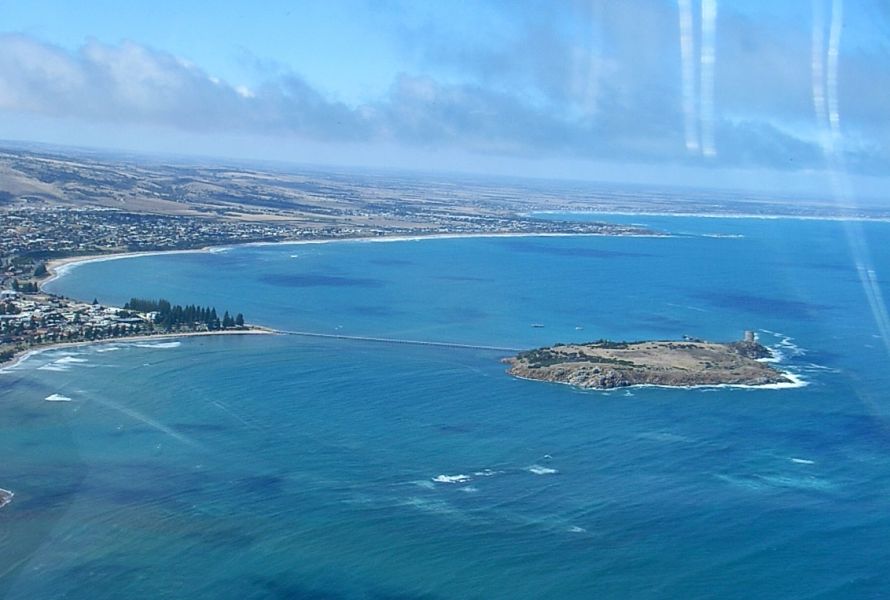
The island is located directly opposite the town of Victor Harbor, connected to the mainland by a bridge. Size is 900 x 600 m. No population there. You can get there on foot, and by old horse-drawn tram. It would seem the easiest IOTA island, but ... On the island is a colony of penguins, to save them night stay at the island is prohibited, as well as making any noisy work and any equipment’ installation.

| OC-193 | Cheyne Island |
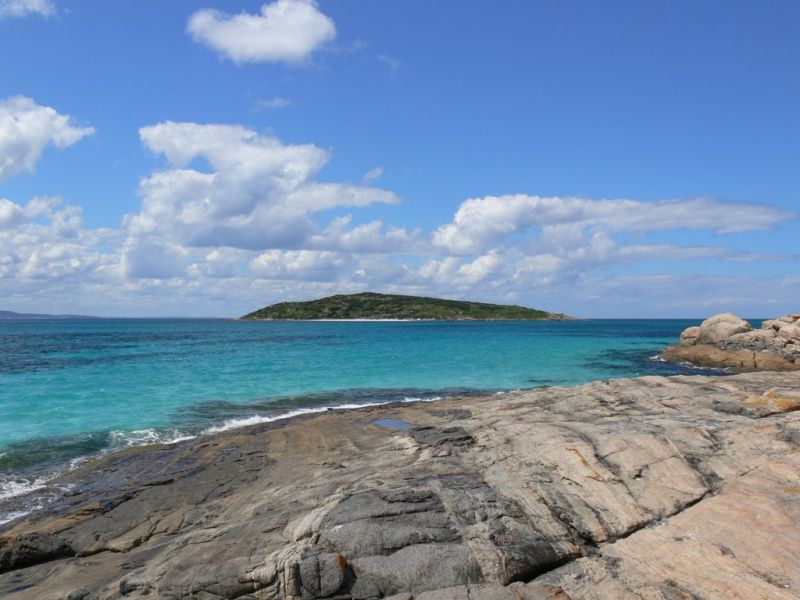
The island is located about 2 km from the coast. Size is 300 x 500 m. No population. You can get there only by water, but it is not safe, because the weather in this place is changing very quickly. The island is a nature reserve, so night stay at the island is prohibited without permission.
Typically used for "weekend trips" by population of nearby villages. Or by those who doesn’t care to drive 500 km for example, from Perth, capital of Western Australia (VK6). Such tourists start to go mid-day on Friday usually, with a rather big trailer loaded by a full-size boat or small dinghy.
Usually such car is also littered with fishing gear and almost evry of them has a distinctive writing on the spare wheel (or somewhere else) -

or like this -

| OC-243 | Breaksea Island |
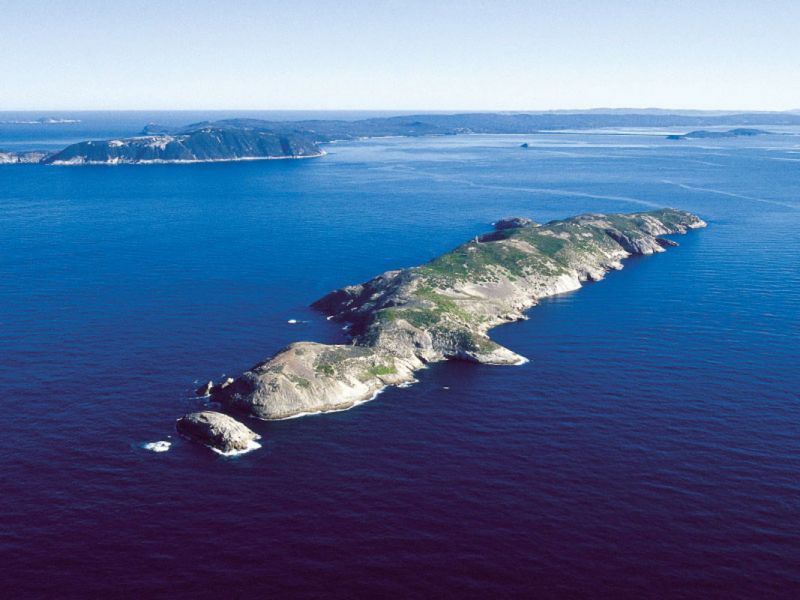
The island is located 8 km from the coast. Size is 3 km x 600 m. No population. All islands of the group - reserves, visiting is finding it not allowed unless visitors are accompanied by reserve staff member.
The island has rocky coastline, so the landing is available by swimming, and then climbing. In the foreseeable future tourist helicopter tours should be available.
In 1858 British convicts built here a lighthouse from metal sheets. In 1902 it was replaced by a cylindrical granite tower, happy towering even today.
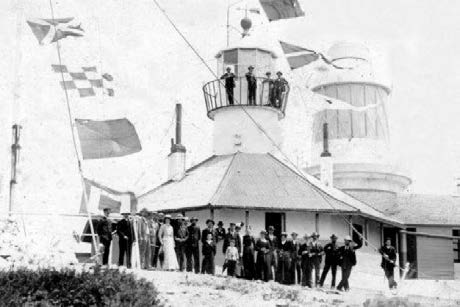
Opening of a new lighthouse in 1902 (rear right). Old lighthouse built in 1858 is in the foreground.
/>
| OC-206 | Dirk Hartog Island |

The island is located 15 km from the coast. Size is 70 x 11 km. Unevenly populated by sheep farmers, visiting of the island is permitted only with prior approval from the family who are owners of the island. There is no road. There is no electricity.
Access is by a ferry, owned by the same family. No more than 8 vehicles is allowed on the island at any time. It is a reserve with limited access.
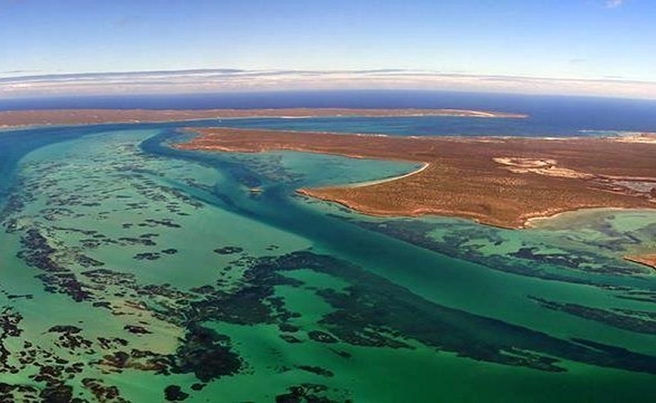
| OC-214 | Lacepede Islands |
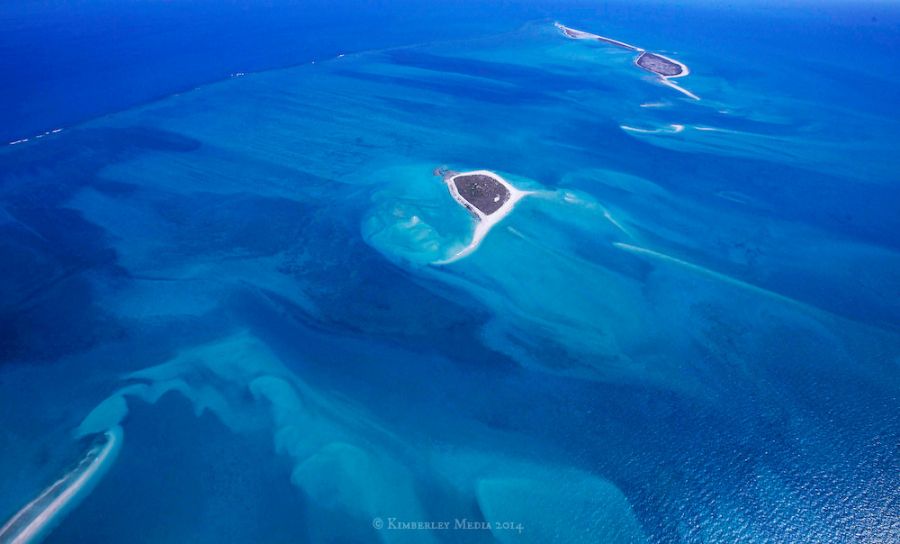
Islands are located 30 km from the coast. It’s a group of four islands, with a total length of 12 km. The islands sit very low in the water, formed by coarse sand and coral debris lying on the surface of the coral reef. No trees, but low vegetation is still present. No population.
The islands are a nature reserve for the preservation of green turtles and sea birds.
In 1876, the islands with large reserves of natural fertilizers such as guano, were declared to belong to the United States under the US "Guano Islands Act", which allows US citizens to take possession of any uninhabited islands lying more than in the league (3 miles) from any coast, if other country did not declared it formally.
The Act allows American companies which produce guano along with Australian and companies from other countries, to get away from Australian tax. Pirate action, known as the "American Incident" or "Lacepede Islands incident" caused political and diplomatic scandal, which was quickly extinguished. The invader did pay fines and taxes, and the islands have been recognized as belonging to Australia.
In the 19th century the islands were also known as a place of temporary detention of kidnapped Aboriginal people, before selling them as slaves, diving for pearls.
Access to the islands is possible only by special cruise ships without the right of landing.
| OC-266 | Viney Island |
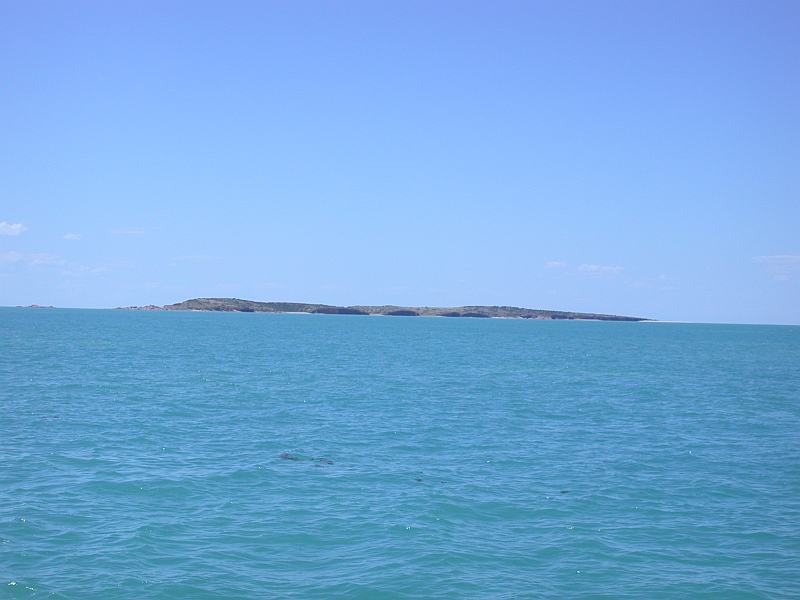
Distance to the coast is 50 km. In reality, the nearest village is about 200 km.
The island rises above the water by an average of 12 m. Accessible only by water, and only at high tide. Size is 3 km x 300 m. No population.
Alas - no more pictures, no more information available. I think due to the fact that the island is far from population centers and has no use (of course I do not mean the IOTA community).
| OC-154 | Troughton Island |
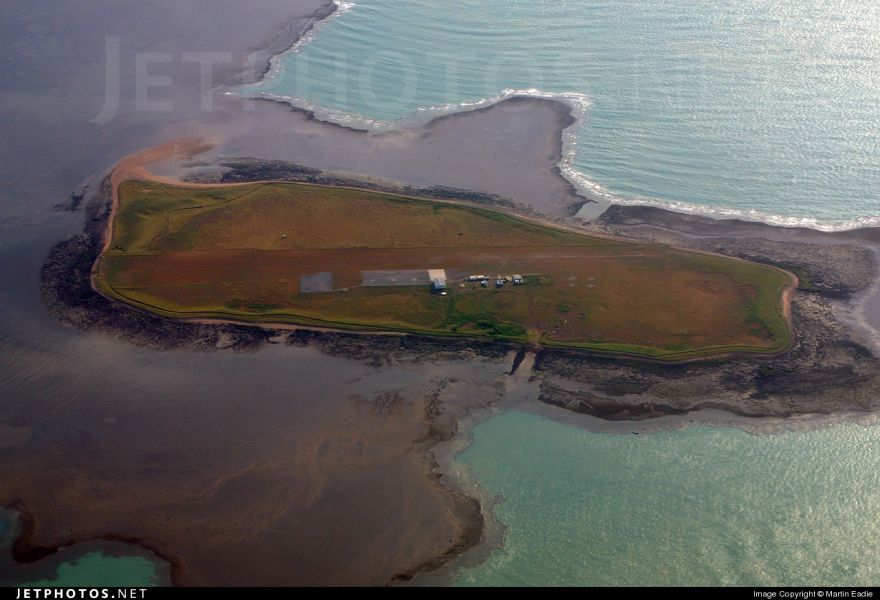
Distance to the coast is 50 km. but to the nearest town is about 500 km.
Size is 1.5 km x 600 m. The height above sea level is 9 meters. No permanent population. No trees.
Accessible by light aircraft from Darwin once a week, on Monday morning, making hour flight even more sad. Judging by the photos, access by water is practically excluded, since the island is surrounded by large shoals. Unless, of course, if someone has burning desire for a long time wading waist-deep in water, carrying everything in his hands.
No data that tourist access is denied, but I suspect that such access is limited, since the island has been the main base for helicopters serving the oil production in the Timor Sea for long time. Currently, the base moved to another location, but the runway on the island is still used in case of emergency.
| OC-229 | Goulburn |
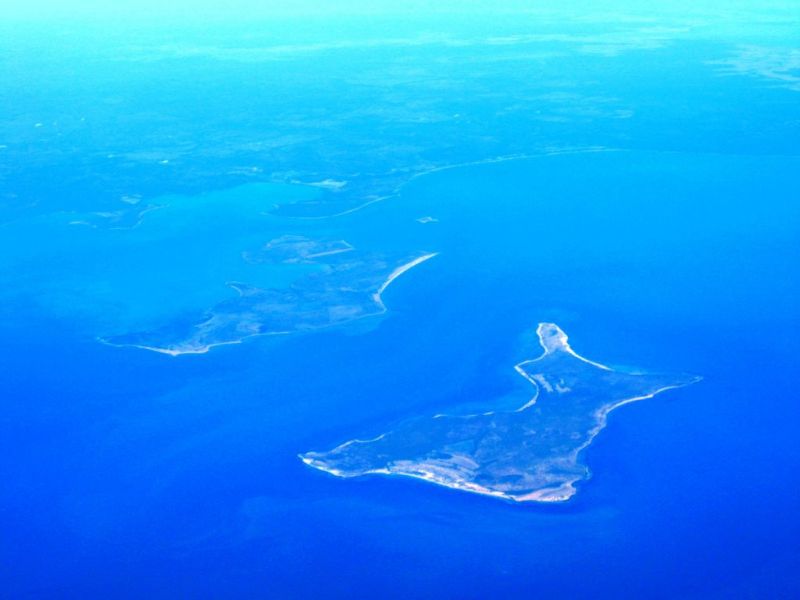
Group of small islands, traditionally inhabited by Aboriginal community. It’s located at a distance of about 300 km from Darwin. Each visit has to be approved by the local Council. The population consists of about 500 people. Access is quite easy by plane daily or a barge from Darwin once a week.
Cruise ships come to the island regularly and often creating a "big problem" for the community. For example, to bring all tourist arrived to the community centre is necessary to use all available vehicles including police cars and a school bus.
As well as raising people out of their beds in the case where the cruise ship came at 7.30 am.
However, it all pays off tourist attractions, songs, dances and sale of souvenirs.
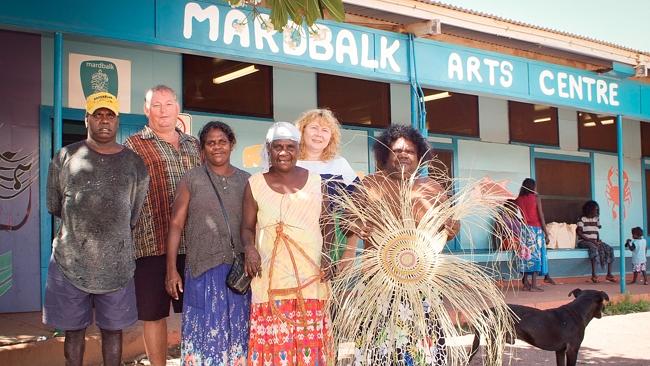
| OC-198 | North Island, Sir Edward Pellew group |

The island is a part of coral archipelago in the Indian Ocean. There is a camp of fishermen living there during the season. The rest of the island is uninhabited. Size is 2 km by 1.5 km. It is National Park, but the access is allowed, except for a few places.
This group of islands is traditionally belongs to Aboriginal people and a landing must have prior approval.
One of the nicest features for local guests who like completely disconnect themselves from the outside world, swimming on air waves, is the presence of crocodiles. At night they roam the land, romantically-minded, "What would I like to eat at night?" And suddenly love to crawl to the tent with the sacramental question "Who is here smells so good? And where you are from? ". And believe me - it is difficult to answer.
| OC-234 | Browse |
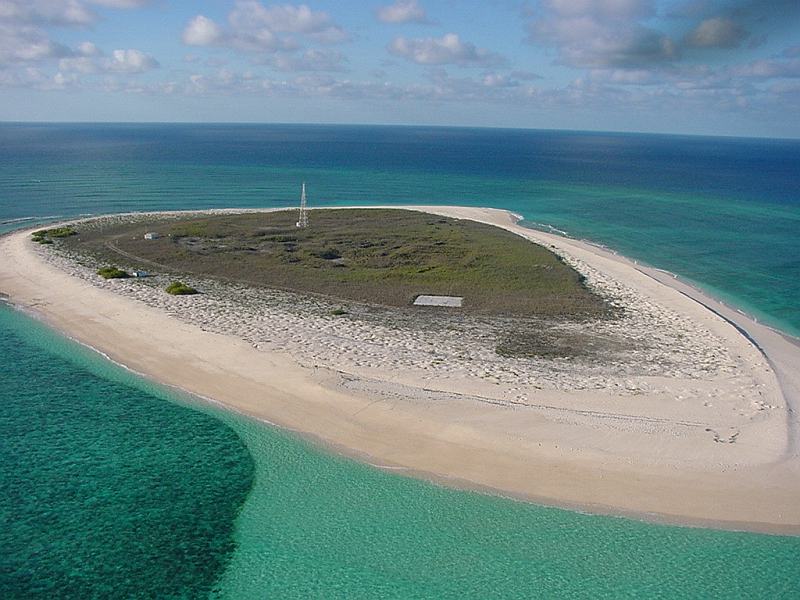
The distance to the coast is about 180 km. Size is 400 x 300 m. No population. No trees. There is nothing. Very similar to Earth future in “Terminator” movie. And even is inhabited by robots, as there is a man-made object - the lighthouse running on solar batteries. As well as a heliport used by oil and gas companies.
The surrounding waters are visited periodically by Indonesian fishermen, since the island is in an area where traditional fishing is allowed.
In addition, divers love the island - 9 ship wrecks are located nearby. One of them is even listed in the National Register of assets as part of the historical heritage of Australia.
The national reserve is a "nursery" for green sea turtles. The photo shows it very clearly. Entire beach above the high tide is covered by many pits. This is the turtle "nursery" - turtles massively come ashore at night, dig holes in the warm sand, lay their eggs and go back into the ocean.
| OC-230 | Rowley Shoals Group |

One of the difficult for IOTA islands. It is located quite far from the coast - about 300 km. Marine Reserve. Not too many ships are going there usually - mainly occasional cruise ships, designed for divers. Privately get here is difficult, expensive and longer.
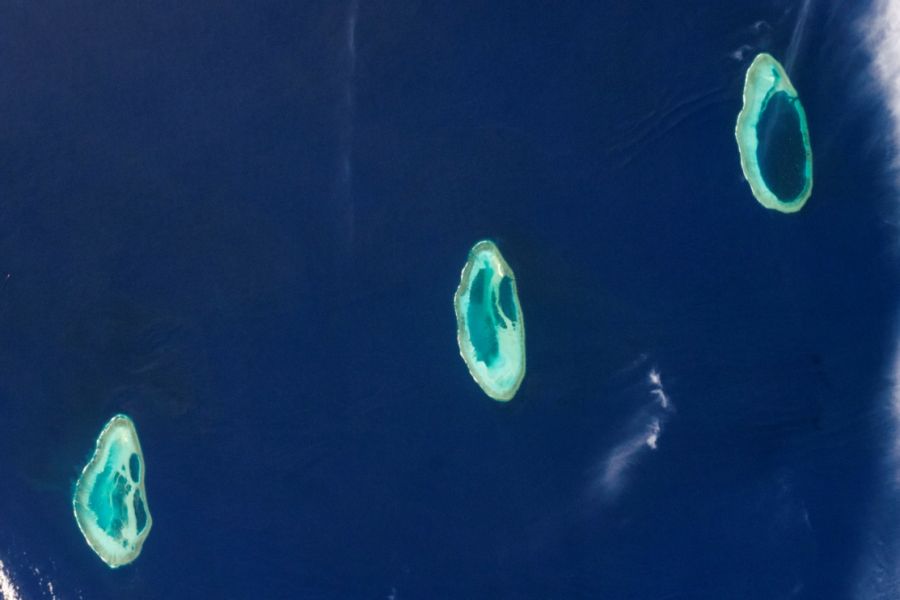
Diving on the islands is considered as one of the best in Australia. Up to 600 species of fish and 200 species of coral in the water with visibility up to 60 m. It will make the stay a memorable one.
| OC-267 | Coral Sea Islands North (Marion Reef) |
.jpg)
| OC-265 | Coral Sea Islands South (Cato Reef) |
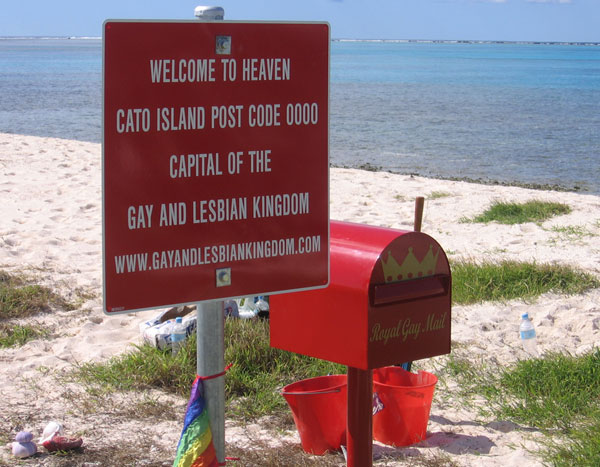
Both groups are composed of many islands and atolls. Mostly uninhabited.
But part of inhabited islands is quite exotic - both the legal situation and local laws.
The main attraction is the fact that the area declared Gay and Lesbian Kingdom of the Coral Sea Islands in 2004. In a symbolic protest gay of rights groups in response to the failure of the Australian government to recognize same-sex marriages, Dale Parker Anderson, who was formerly a local administrator, proclaimed himself as an Emperor Dale R ( Residence Atoll Cato OC-265). In the same 2004 a war against Australia has been declared. The war still flows peacefully until today. The Kingdom releases own postage stamps, currency - the euro.
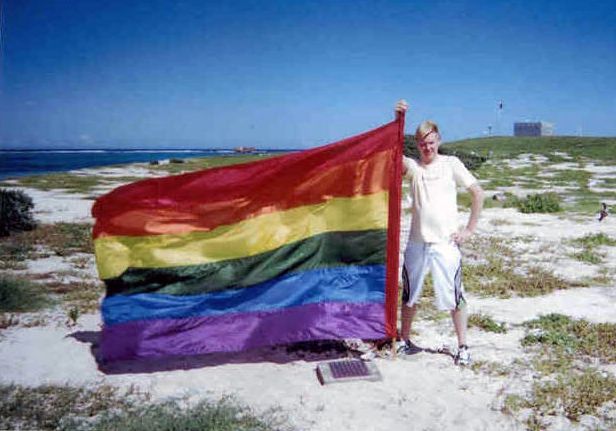
Just in case - one of the major local laws.
Like the Israeli "Law of Return" anyone who came to the territory of the Kingdom, automatically entitled to permanent residence and can immediately apply for citizenship with the only condition - to be gay or lesbian.
But the rush to pack the luggage is not necessary - the Kingdom is not recognized by anyone in the world.
That ended a brief review. Maybe not soon we will hear radio amateur giving CQ IOTA from one of the islands above. Or, on the contrary, very soon. That, however, applies to the other islands of Australia. And not only Australia. And not only in Oceania.
We are waiting for enthusiasts, who keeps everything in this world.
I'd like to hope that I will be among them.
I believe that it was not in vain - read in childhood "Frigates’ Drivers" book, get infected by Oceania and romantic islands and finally come to Australia; first impressions of the island, which has visited; the sudden feeling that the world simply nothing else - the water from all sides, lockable curved horizon, moist air and a low dome of the sky (and here it does seem much lower than in Russia) ...
So - "We meet, we will meet again!" - on the air or in person, to make friends or just staying as memories in someone’s mind. Memories of how we “pulled” weak signal from QRM, how tried to get through a pile-up, twisted an antenna hoping to pick up short burst of propagation, how did not believe own ears, grabbing back tail callsign’s tail and "599", waiting for QSL ...
CUAGN and 73!
Good luck!
Andy VK5MAV.
Adelaide, September 2015.
P.S. If during the reading you’ve got any questions - I will try to answer. Please leave comments
 DXNEWS.COM
DXNEWS.COM

